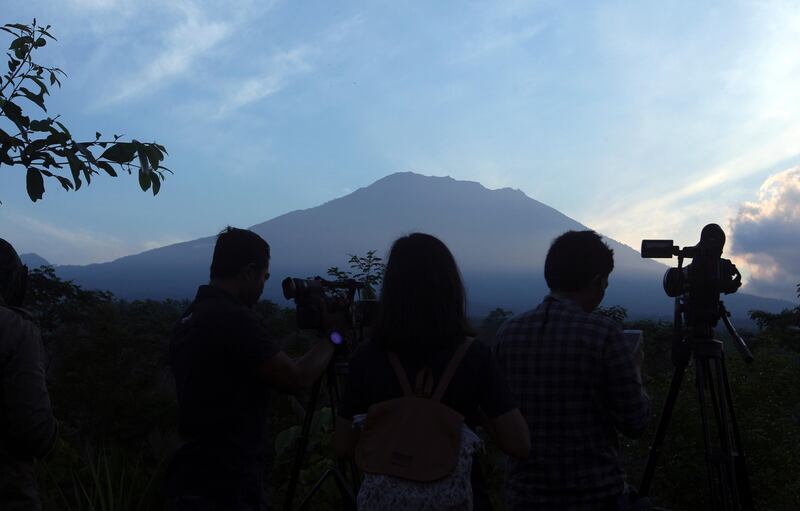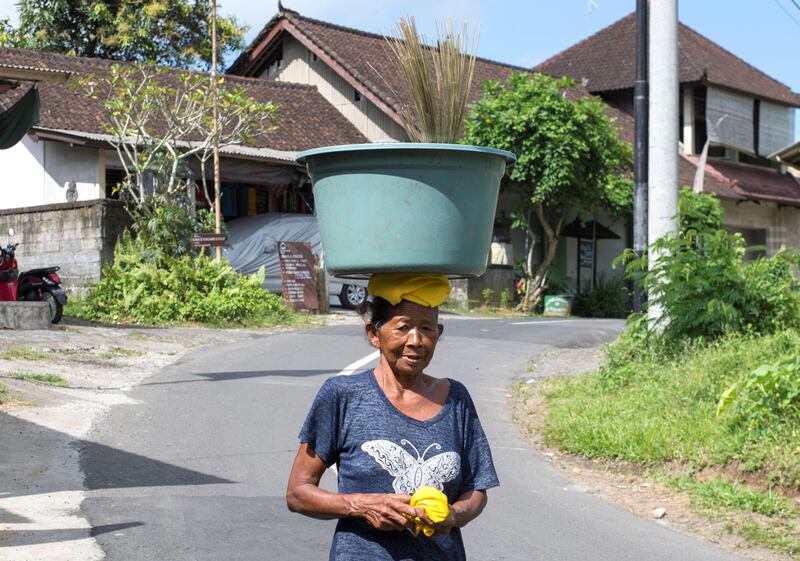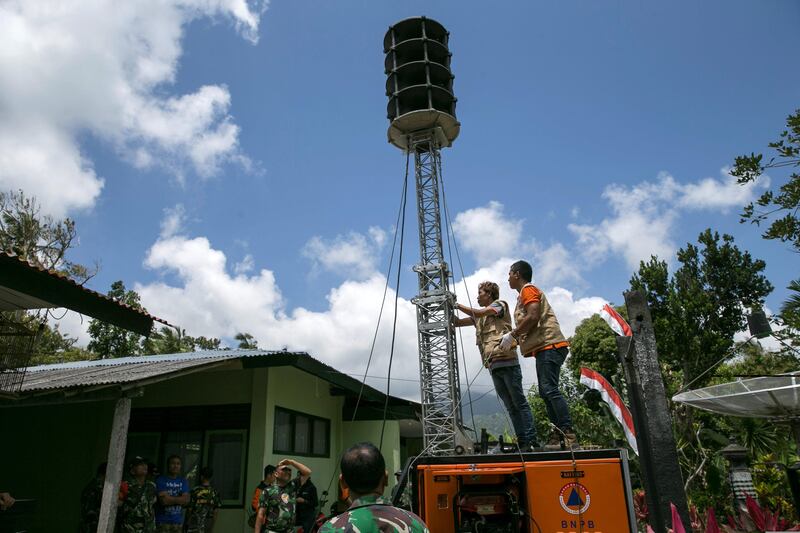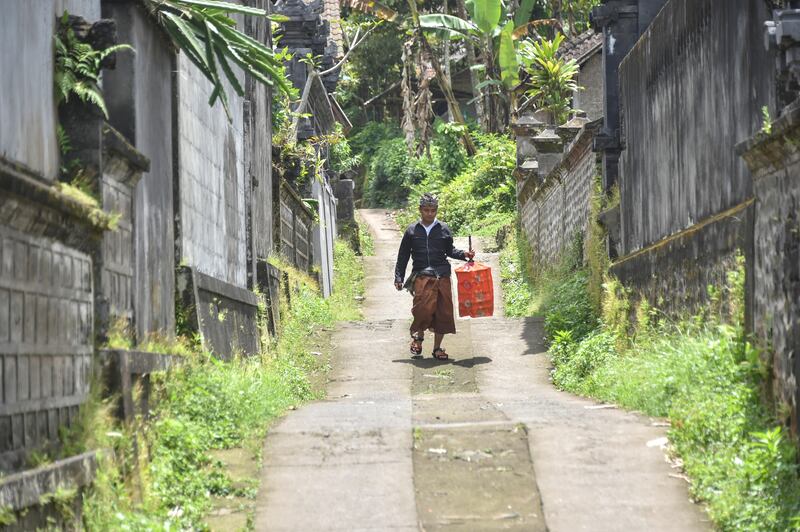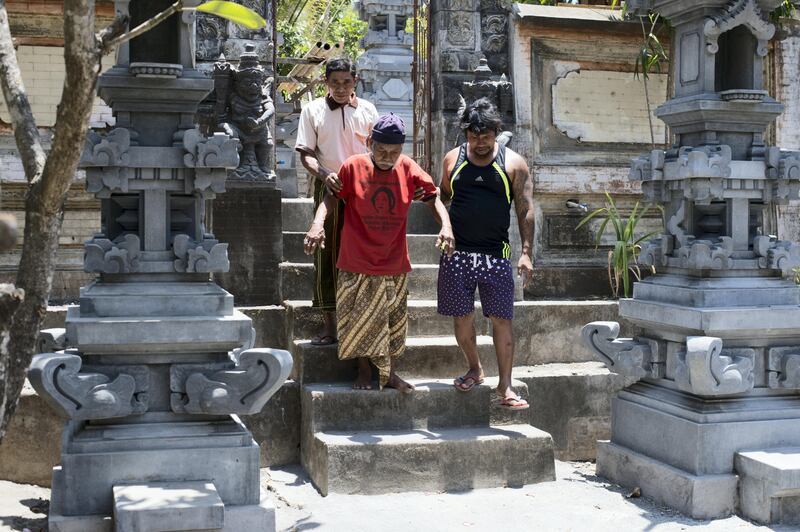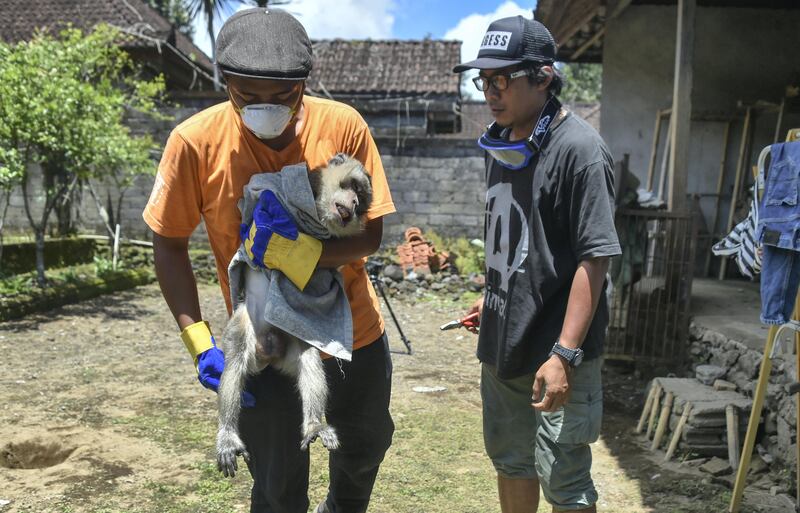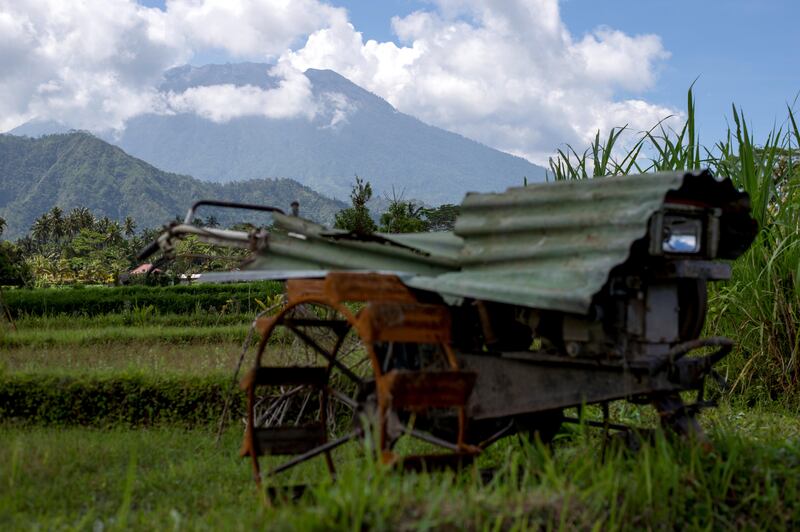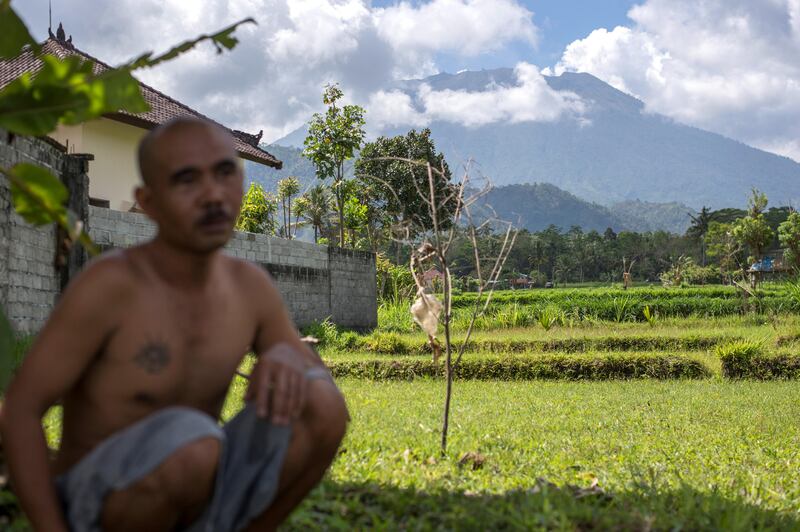On a velvety Thursday evening in Canggu, Bali’s surfer hub, Old Man’s is drawing a healthy crowd. Under strings of fairy lights, around bright tables, locals, expats and tourists sip their drinks to the strains of an off-key live band. Down the road at motorbike-to-surf emporium Deus ex Machina, every table is full, and the car park is chock-full of bikes.
Canggu might be a little quieter than a typical shoulder season Thursday, but not by much. And Bali does not feel like an island under threat — at least, not here, in the south. Yet since Friday, the island of the gods has been the epicentre of a media storm, as Mount Agung, the sacred mountain that dominates Bali's north-east corner, judders, steams and threatens to erupt.
On Friday, Indonesia's expert volcanologists declared Agung at code red (level 4), the highest possible alert status, meaning they believe an eruption could be imminent. Indonesia's 18,000 or so islands are home to almost 130 active volcanoes, and warnings, although not uncommon, are not issued lightly.
Indonesia's disaster management agency, the BNPB, is overseeing large-scale evacuations. Around 105,000 people, some of Bali's poorest, have already left the area around Agung. They stand to lose everything – from their rice crop to their pets and their homes, which now stand empty and forlorn, like Pura Besakih, Bali's holy mother temple.
However, both the timing and the scale of any eruption is impossible to predict, "Volcanoes are in between completely unpredictable — like earthquakes — and well predicted over the next five days — like hurricanes — so it's not always clear what action to take," said geophysicist Eric Fielding.
While Indonesia's volcano experts are monitoring Agung closely, all they can tell is whether magma is moving towards the surface (it is) and whether energy is building (it is). This suggests the volcano will erupt and that it is likely to be soon. Yet it is also possible that Agung may rumble on for months before exploding, and far from impossible that it may go back to sleep.
Is it time to run for the hills? The tourists in Old Man’s — more than 60km from Mount Agung — don’t think so. Parisians Flora Louvois and Laura Coz are taking a couple of months off in Asia to recover from their law exams, and started their sojourn in the dive town of Amed, in north-east Bali — outside the evacuation zone, yet in the shadow of the volcano.
"People were really worried, and we were the only tourists. Everyone had left," Ms Louvois said. "The shops were closed; there were no fresh vegetables; people had nothing to do. But here, we feel safe. The only worry is about our flight to Cambodia next week."
Joshua Corey, a designer from Portland, Oregon, was similarly unconcerned — even by the volcanic tremors, which he felt as a mild vibration. "I'm not worried about anything," he said. "I heard about the volcano on the day I arrived, when my mother started texting me to get out of here."
Bali's major tourist destinations are so far outside the Mount Agung exclusion zone that they don't even figure on the same map: Ubud is 30km from Agung, and Kuta 75km away, while the exclusion zone extends no further than 12km. It is, however, possible that ashfall could affect Bali's tourist hotspots. The International Volcanic Health Hazard Network is advising people to prepare to protect their lungs: shops on the island are reordering the recommended N95 dust masks.
Yet, as with other recent eruptions, such as Lombok's Rinjani and Java's Raung, the biggest impact of Agung on tourists will be airport closures. Flights are currently running as normal, but on Tuesday the airport's status was upgraded from yellow to amber, meaning Agung is "exhibiting heightened unrest with increased likelihood of eruption."
Tourism contributes over $12 billion to Indonesia's economy, and the overwhelming majority of tourists enter the country through Bali airport. Almost 600,000 foreigners arrived in Bali last month alone. And, says Stuart McDonald, Indonesia-based publisher of travel planning website Travelfish.org, there simply isn't the capacity to route that volume of people off the island in any comfort.
"Hopefully if Agung erupts it isn't a long-running eruption," he said. "If the airport is closed for a long period there is not the ferry capacity to move people off the island."
It is difficult to overstate the importance of tourism to Bali's economy — and hard to measure it, as much tourism income goes undeclared to the authorities. And, Mr McDonald says, it's important to support the island in its time of need.
"What I would say to people now is that, unless you are coming to Bali to climb Agung or dive Tulamben, come," he said. "If you're thinking about booking a holiday, check your travel insurance first — because the chances are that you won't be covered insurance-wise for anything related to Agung if you book a holiday now."
Mr McDonald is keen to emphasise that visiting Bali is not taking food from the mouths of evacuees or victims of a potential eruption. "Not only the Balinese but the Sasak people in Lombok are saying, 'Come!'" he said. "I'm not into abandoning places in their time of need, and this is when Bali needs you."
